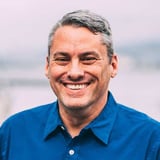Summary
Recent advances in AI, ML and robotics have many wondering: Will there be no work left for humans to do? As long as we need to deal with climate change, protect wildlife and fragile ecology, feed the world, end disease, resettle refugees, and educate the next generation, there clearly is plenty of work for us all. The more important question is: Are organizations responsible for delivering returns to their shareholders regardless of social, environmental, and human consequences? The good news is that a new type of organization is emerging, one that delivers not just financial returns but serves the greater good of society they operate in.
Key Insights
-
•
The shift from profit-only business goals to societal contribution is changing enterprise missions and success metrics.
-
•
AI and automation will take over simple, codifiable tasks, leaving humans with more complex, strategic work.
-
•
Enterprise design skills are highly transferable to social impact work, as shown by Janaki’s NGO experience.
-
•
Systems thinking allows designers to create sustainable solutions by understanding the interconnectedness of processes and stakeholders.
-
•
Silos exist even in small NGOs and breaking them is critical for effective collaboration and innovation.
-
•
Fighting for the underdog means advocating for better user experiences even when purchasing decisions focus on features.
-
•
Effective communication requires repetition and patience to bridge gaps between message sender and receiver.
-
•
Cross-functional, diverse teams foster better solution co-creation by incorporating multiple perspectives.
-
•
Purpose-driven enterprises will demand workers to continuously develop skills suited for complexity and ambiguity.
-
•
Design thinking’s mindset of divergent and convergent thinking is essential for innovation across contexts.
Notable Quotes
"There is still so much work to be done: from dealing with climate change, protecting wildlife, rebuilding infrastructure, feeding the world, ending disease."
"Larry Fink said that to prosper over time, companies must deliver financial performance and show positive contribution to society."
"When the role of business changes, the mission and metrics must change to include societal impact."
"Human tasks will become more complex and multi-dimensional as simple tasks get automated."
"Our first superpower is systems thinking — thinking about interconnections that are often invisible but vital."
"Silos are inevitable but as enterprise designers, we find ways to work across them to get our job done."
"Fighting for the underdog means making the case for user experience in language that resonates with decision makers."
"The biggest mistake in communication is the illusion that it has happened."
"When you’re passionate about a topic, you hear the song loudly in your head; the listener just hears clapping."
"The tasks left for humans after automation will be strategic, multifaceted, creative, and complex."
Or choose a question:
















More Videos

"I underestimated how much identity our team tied to UX and how scary that loss felt to many of them."
Nalini KotamrajuResearch After UX
March 25, 2024

"Don't be a pot plant, be a crab."
Dean BroadleyNot Black Enough to be White
January 8, 2024

"It can be so tiring to be the only one constantly saying this has to be done differently."
Denise Jacobs Nancy Douyon Renee Reid Lisa WelchmanInteractive Keynote: Social Change by Design
January 8, 2024

"Pilots don’t need to be perfect, they just need enough moving parts to gather useful feedback quickly."
Kim Fellman CohenMeasuring the Designer Experience
October 23, 2019

"We mostly have something called a BYOE scenario or bring your own ethics."
George AyeThat Quiet Little Voice: When Design and Ethics Collide
November 16, 2022

"A design system is done not when the style guide is launched, but when it positively impacts customer experience."
Nathan CurtisBeyond the Toolkit: Spreading a System Across People & Products
June 9, 2016

"We want our culture to be about the outcome, not about who owns what or who’s doing what on a piece of work."
Greg PetroffThe Compass Mission
March 10, 2021

"Traditional design thinking and human-centered design rarely take localized nuances and global trends into account."
Chloe Amos-EdkinsA Cultural Approach: Research in the Context of Glocalisation
March 27, 2023

"Heat maps showed users clicking on areas they thought were clickable but weren’t, resulting in click rage."
Mackenzie Cockram Sara Branco Cunha Ian FranklinIntegrating Qualitative and Quantitative Research from Discovery to Live
December 16, 2022
















